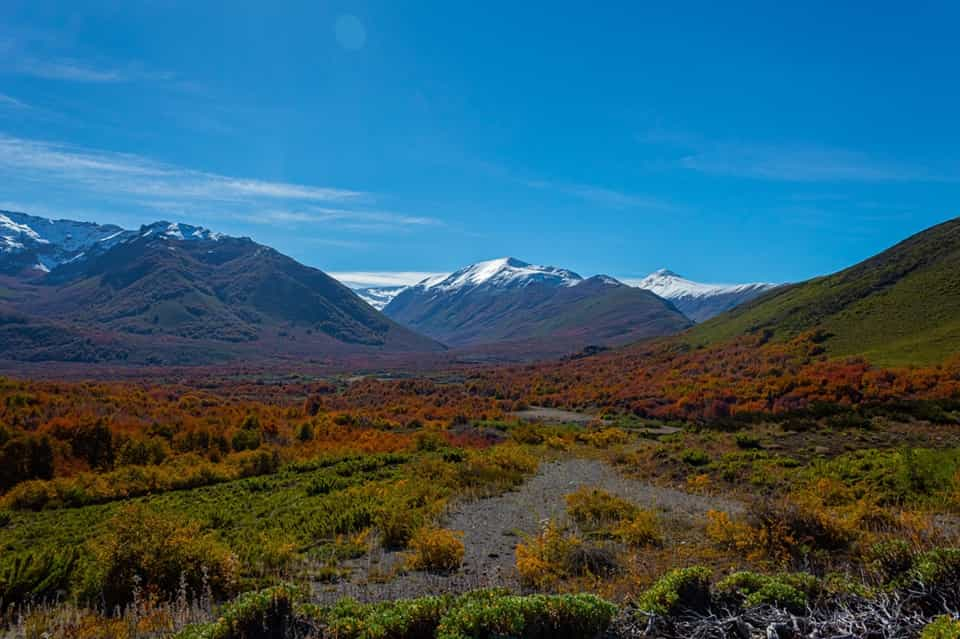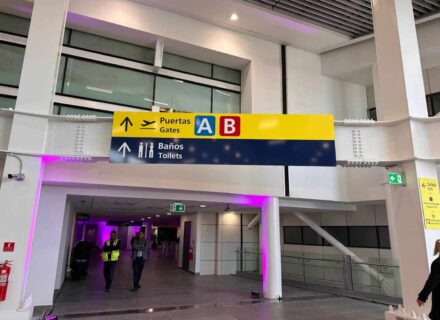The Ñuble region is a tourist destination for all tastes. Spanning from the Andes mountain range to the sea, its 21 communes and six main tourist destinations offer activities in snow, hot springs, culture, wines, sea, and mountains.
According to the Monthly Tourist Accommodation Survey (EMAT), prepared by the National Institute of Statistics, this made the Ñuble region the second-best performing region nationally. During May, overnight stays in the region’s tourist accommodation establishments totaled 30,141, representing a 30.3% increase compared to the same month in 2024.
Also read… Senior Citizens Vacations: the program that allows people over 60 to travel around Chile at reduced prices
In this way, the cumulative variation in the first five months of 2025 reaches 12.7% compared to January-May 2024.
Regarding the occupancy rate for the weekend from Thursday, June 19 to Saturday, June 21, corresponding to the National Day of Indigenous Peoples holiday, the Valle Las Trancas destination exhibited an occupancy rate of 80%, marking an increase of 8.2 points compared to the same date in 2024, being the highest among the 54 destinations measured in the country, which recorded an average occupancy of 47.1%.
This measurement also highlights the increases in Cobquecura, which marked a rate of 19.3%, representing an increase of 13.2 points compared to the same period last year, while the Chillán-Chillán Viejo destination showed an occupancy of 40.6% and in Quillón, the rate reached 15.5%.
These results reflect the growing interest in the region and the diversity of experiences the area has to offer. Some of its most popular destinations have captured visitors’ attention, establishing themselves as must-sees for those seeking nature, rest, and culture in one place.
Valle Las Trancas and Nevados de Chillán: Snow and Nature in the Ñuble Region
Valle Las Trancas is an internationally renowned mountain destination in the Ñuble region. At the foot of the Andes Mountains, it features a unique environment of native forest, heights, waterfalls, and natural trails.
Surrounded by incredible attractions to enjoy in winter and summer, such as Nevados de Chillán, Las Termas, Laguna del Huemul, and Ñuble National Reserve, these are unmissable attractions of the region.
If you continue along the route to Shangri-La, you can reach Laguna del Huemul on a seven-hour trek with snowshoes or on a horseback ride. There you can also take advantage and practice various sports at Nevados de Chillán and its 10,000 hectares of skiable terrain.
In the 75,078 hectares of surface area of Ñuble National Reserve, you can enjoy thermal baths and incredible landscapes that include a glacial-origin lagoon.
San Fabián: Ideal for Lovers of Sports, Culture, and Rural Tradition
The diversity of landscapes and native forests make San Fabián de Alico unmissable. Year after year, its mountain range attracts sports lovers, with activities such as trekking, horseback riding, rock climbing, or mountain biking. This surrounded by lagoons, rivers, waterfalls, natural hot springs, or climbing to the top of hills to greet the condors.
Additionally, its biodiversity offers the possibility of birdwatching excursions, botanical tours, or simply relaxing in a forest bath. This is one of the best places to practice rafting and kayaking, and its turquoise waters provide the perfect setting for swimming or practicing sport fishing.
San Fabián – birthplace of Violeta and Nicanor Parra – also offers rural and cultural tourism activities such as visiting an apiary, an educational farm, the farmers’ market in the plaza, enjoying a folk evening or a goat roast on a stick with muleteers.
Cobquecura: Sea, History, and Protected Nature
For those who enjoy good food, Cobquecura’s gastronomy is characterized by offering a great variety of fish and seafood. Additionally, potatoes, wheat, legumes, and fruits are traditionally harvested, where papaya crops, the southernmost in the country, are surprising.
The coast allows for extreme sports such as surfing due to its varied waves. Other water sports such as SUP (Stand Up Paddle), kitesurfing, windsurfing, among others, also coexist.
Likewise, there are places for trekking, biking, and excursions through its wetlands and incredible rock formations such as Santa Rita cave, the purple duck caves, the lovers’ arch, the Puelche hole, and many more. In the Historic Center of Cobquecura town (declared a Typical Zone), you can observe preserved architectural works that rescue history, such as large mansions and constructions in flagstone and native wood.
Some of the must-sees in Cobquecura are the Lobería and Lobería Stone Church islets, declared a nature sanctuary in 1992, a natural scenery of great value for the conservation of the area’s biodiversity, as it constitutes the habitat of various species of algae and marine animals, among which the South American fur seal stands out and where Chilean whales and dolphins pass year-round.
Valle del Itata: Where Wine Tells Stories
The Valle del Itata is the ancestral wine-growing heart of Ñuble. From Ñiquén to Quillón, this territory invites you to live a unique experience, where wine, history, and nature merge in every corner.
In its 13 communes, visitors can delve into Chile’s rural soul and be surprised by its stories, landscapes and flavors, centenary vineyards and wineries of small producers who make wines with heritage grape varieties such as país, cinsault, and moscatel, using methods inherited from generation to generation.
In the area, you can take tours, guided tastings, and enjoy local gastronomy in restaurants with territorial identity.
Quillón: The Flavor of the Countryside in the Valle del Sol
It is considered the tourist capital of Valle del Itata, a place to connect with nature, the countryside, its traditions, and enjoy its exquisite gastronomy, where wines and liqueurs stand out.
Laguna Avendaño is a beautiful natural body of water, an ideal place for those seeking to enjoy nature, tranquility, and outdoor activities. Its environment, surrounded by green areas and a diversity of flora and fauna, makes it a perfect destination for family recreation and tourism.
The “Valle del Sol” (Valley of the Sun), as Quillón is known, is the faithful reflection of the Chilean countryside. It is located 40 minutes from Chillán and has a climate that allows the production of wines, liqueurs, and a long list of typical Chilean products and dishes.
Chillán: Regional Capital and Birthplace of Great Personalities
When one talks about Chillán, it is associated with countryside, wines, hot springs, and sausages, but also as a land that has been the birthplace of a series of famous personalities in history. From the founding father Bernardo O’Higgins to some of the main representatives of national art, whether in musical, literary, or plastic arts.
Claudio Arrau, Marta Colvin, Gonzalo Rojas, Marta Brunet, Eduardo Parra, and many others are just part of the legacy of one of the cities with the most cultural heritage in the south of the country, which makes culture breathe through art, but also in gastronomy and in its identity linked to the countryside, which can be appreciated in its historic Market.
In every corner of the city – which has had to rise again and again from devastating earthquakes – there exists some construction or some story that evokes that motto of “land of artists” that many have attributed to it. Museums, murals, and the iconic Cathedral bear witness to that legacy.


